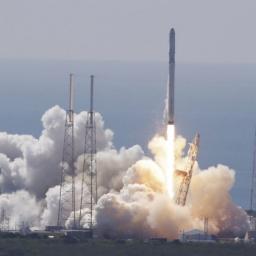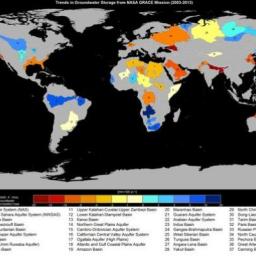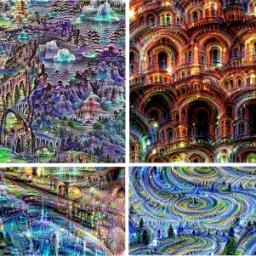
The most expensive weapon in history, the U.S. Air Force's $350 billion
F-35 stealth jet was outperformed by an F-16 (designed in the early 1970s) in a mock dogfight. The F-35 test pilot said new plane was too cumbersome to dodge enemy fire, and deemed it totally inappropriate for fighting aircraft within visual range. U.S. military leaders have extolled the virtues of the F-35 jets. Marine Lt Gen. Robert Schmidle said the planes were like flying computers and that they could detect an enemy five to 10 times faster than the enemy could detect it.
While the F-35 is a "multi-role" aircraft and not a purpose-built air superiority fighter (unlike the closely guarded F-22), the fifth-generation aircraft is designed to excel in electronic warfare, air-to-surface combat and air-to-air combat. The US is anxious to sell them to their NATO allies to replace aging F-16, F/A-18, F-4, and Harrier fleets. The F-16 has served in the Air Forces of 26 nations, including the U.S., Israel, Egypt, the Netherlands, Denmark and Norway. Most are expected to purchase the new F-35 jet. Britain plans to purchase 138 F-35 jets from the US, but at present costs that would add up to a total of $19 billion. US Vice President Joe Biden promised a delivery of the jets to Israel 'next year', amid reports that Tel Aviv has approved a new deal to add 14 more jets to its 2010 order for 19 aircraft.
Australia has committed to purchasing 72 F-35s. Japan has ordered 42 F-35As. South Korea has also ordered 40 F-35As, with plans for 20 more, budget permitting.
DuckDuckGo announced they hit a milestone, surpassing the 10 million daily query mark on June 22, 2015. DuckDuckGo saw 10,218,617 queries on June 22nd alone. The company gives credit to that surge in users based on them being a privacy focused search engine. Gabriel Weinberg wrote, "we're proud to be helping so many people take back their privacy." DuckDuckGo has
grown 600% since Edward Snowden's NSA surveillance news broke two years ago. And yet only a few percent of people have even heard of DuckDuckGo and other private alternatives.
Founded in 2008 by Gabriel Weinberg, DuckDuckGo is based in Paoli, Pennsylvania rather than Silicon Valley. The site, which
does not track user data, now handles some 3bn searches a year - although that is only about the same volume that Google processes in 24 hours. Since last year, it has been a built-in search option in both Safari and Firefox. The site also promises to provide the information users want with fewer clicks through features such as instant answers, themes and !bangs. DuckDuckGo hopes these other features will help it continue to build on the audience gained from people looking for more private ways to search the web following the Snowden revelations.
The Federal Communications Commission approved a proposal to explore including broadband as part of a decades-old program that subsidizes phone service for low-income consumers. The plan would expand the government's Lifeline program - created 30 years ago to help financially struggling Americans access basic telecommunication services -
to include broadband Internet access. The commission must now figure out the specifics of incorporating broadband into Lifeline, after which another vote will be held. As expected, Republicans opposed extending the phone subsidy, arguing that the program has been subjected to fraud and abuse.
Established in 1985, the Lifeline program offers low-income users a $9.25 monthly subsidy for basic telephone services. It was updated in 2008 to include wireless phones, and now Wheeler wants to reboot it again to "make sure it is still performing the critical function for which it was formed." His proposal would give eligible consumers the option to apply the subsidy to broadband Internet access.
The rise of ad blocking is becoming a serious problem for digital media companies. And for Google, it's turning into a multi-billion dollar issue. PageFair, a company that works with publishers to measure the cost of ad blocking and to help them display less intrusive advertising that can be whitelisted by the ad blockers, estimates that Google lost out on $6.6 billion in global revenue to ad blockers last year. To put that into context, that's 10% of the total revenue Google reported in 2014.
Adblock Plus, one of the most popular ad blockers, does give internet companies the chance for their ads to be whitelisted if they meet an "acceptable ads" policy - which includes what they deem as non-intrusive ads like sponsored search links. But bigger digital advertising companies like Google (as well as Microsoft, Amazon, and Taboola) are made to pay Adblock Plus huge fees - up to 30% of the additional ad revenues they would have made were the ads unblocked, according to The Financial Times. Google has managed to claw back around $3.5 billion by getting on ad blockers' whitelists, but
Google is rumored to be paying $25 million to Adblock Plus alone just to do so.
But Google is not necessarily critical of ad blockers, in spite of the threat they pose to its revenue. Earlier this month Google CEO Larry Page was questioned by shareholder at the company's AGM as to whether he was worried about the rise of ad blockers. He responded that the best response to ad blockers from the industry will be to create better ads.
While HDCP 2.2 was developed to defeat media pirates, it has far more
potential to thwart ordinary folks who just want to enjoy a movie in the privacy of their home. With current versions of HDCP rendered ineffective and all manner of 4K content on the horizon, Hollywood decided it needed stronger security. Cryptanalysts demonstrated HDCP to be breakable three years before the FCC approved it as a "Digital Output Protection Technology" in 2004. By 2010, a master key that effectively neutralized HDCP v1 was leaked. Versions 2.0 and 2.1 were summarily cracked as well. The main difference with 2.2 is the encryption systems used in the handshake are more complex than in prior versions. HDCP 2.2 is not backward compatible with the previous versions of HDCP that are currently used by most of the HD devices in all our homes. Having a non-HDCP 2.2 sound bar or AV receiver in your home theater system will be enough to terminate the handshake.
If you jumped on the Ultra HD bandwagon when 4K TVs and media devices first hit stores in 2013, don't assume your purchases support HDCP 2.2 and will work with future 4K devices and content-most of those early models don't and won't. If you've haven't dipped a toe into the 4K pool yet, we stand by our advice to wait it out until content producers and providers crank out enough 4K content to make the necessary hardware-upgrade expense worth it. That may take years.

SpaceX's perfect launch record came to an end, today, as an unmanned cargo ship destined for the International Space Station
exploded minutes after launching from the Cape Canaveral Air Force Station in Florida on Sunday morning. The 208-foot-tall (63-meter) rocket was the company's 19th Falcon 9 launch since its 2010 debut, including six previous cargo runs for NASA under a 15-flight contract worth more than $2 billion.
The spacecraft carried 2,477kg of food, clothing, equipment and science experiments for the station. The gear included the first of two docking systems for space taxis under development by SpaceX and Boeing to park at the station. NASA hopes to turn over crew transportation to the US companies before the end of 2017, breaking Russia's monopoly. The crew on the International Space Station has about four months of food and supplies on board, so the accident does not pose an immediate problem for them. However, NASA's second cargo transporter, run by Orbital ATK , remains grounded following
a launch accident in October. In April, a Russian Progress cargo ship
also failed to reach the station.

In two new studies, a team of researchers led by hydrologists from the University of California, Irvine assessed the depletion of groundwater on a global scale using readings from NASA's GRACE satellites. The satellites monitor changes in Earth's gravity and act as a "scale in the sky," measuring shifts in the total amounts of water, both above and below ground. They concluded that
likely much less water remains in aquifers than previously estimated. Groundwater is the primary source of water for about 2 billion people.
Over half of the world's biggest aquifers are being depleted. They are past sustainability tipping points, and a third of those big aquifers - 13 of those - are seriously distressed. The most severe situations seen in dry areas where little or no water is seeping into the ground to offset the amounts pumped out. The researchers found the Arabian Aquifer System, which supplies water to more than 60 million people, to be the most overstressed in the world, followed by the Indus Basin aquifer of northwestern India and Pakistan, and the Murzuk-Djado Basin in northern Africa, the Canning Basin in Australia and the aquifer system of the North China Plain. The aquifer beneath California's Central Valley was labeled as highly stressed. The Ogallala Aquifer didn't show up as being in decline, overall, even though portions of it likely have only a few decades of water left.
These problems can be addressed with proper management strategies, including replenishing aquifers when possible, recycling wastewater and adopting water-saving irrigation techniques.
Shaun W. Bridges, a computer crime expert and a former Secret Service special agent who helped bring down Silk Road founder Ross Ulbricht, will plead guilty to wire fraud and money laundering for
skimming hundreds of thousands of dollars in bitcoin and routing the money to his own accounts, according to federal court documents.
Using information he got from his interrogation of a Silk Road customer service representative who had administrator access, Bridges accessed Silk Road's systems in January 2013, reset several passwords and transferred about 20,000 bitcoin from the accounts, according to the complaint. He then converted the bitcoin into cash through a Japan-based bitcoin exchange and from there sent the money to the shell company's investment accounts, investigators said. Based on conversion rates at the time various transactions were made, federal prosecutors put the value of Bridges' loot at $820,000.
A second investigator, Carl Force, the Drug Enforcement Administration's lead undercover agent in the Silk Road case, faces a hearing in August for allegedly stealing bitcoin from Silk Road - and for allegedly blackmailing Ulbricht while at the same time selling him information about the investigation.

Artificial neural networks have spurred remarkable recent progress in image classification and speech recognition. But even though these are very useful tools based on well-known mathematical methods, we actually understand surprisingly little of why certain models work and others don't. How do you check that the network has correctly learned the right features? One way to visualize what goes on is to turn the network upside down. Neural networks that were trained to discriminate between different kinds of images have quite a bit of the information needed to generate images too. It can help to visualize the network's representation. in some cases, this reveals that the neural net isn't quite looking for the thing we thought it was.
If we choose higher-level layers, complex features or even whole objects tend to emerge. We call this technique "Inceptionism". If a cloud looks a little bit like a bird,
the network will make it look more like a bird. After several passes, a highly detailed bird appears, seemingly out of nowhere. Of course, we can do more than cloud watching with this technique. For example, horizon lines tend to get filled with towers and pagodas. Rocks and trees turn into buildings. Birds and insects appear in images of leaves. We can even start this process from a random-noise image, so that the result becomes purely the result of the neural network. These computer 'dreams' generated are a fascinating insight into the mind of a machine.
The past three years have been the driest in California history dating to the 1849 Gold Rush. Low snow-pack, combined with 2014 being the hottest year in history in the state, exacerbated the situation. With all the attention focused on California's water woes, an observer might conclude that the Golden State's drought is the exception. It isn't.
Forty states expect to see water shortages in at least some areas in the next decade. In a 2013 survey by the Government Accountability Office (GAO), state water managers from around the country said they expect freshwater shortages to continue into the next decade, even under "average" conditions.
Montana was listed in the GAO report as the state most likely to have a statewide water shortage in the next decade. Many other western states are in a similar predicament. About 36 percent of Texas is experiencing moderate or exceptional drought, but that actually represents an improvement. In 2011, 100 percent of the state was experiencing drought. Texas lawmakers passed a referendum for $2 billion of the state's rainy day fund to be used to leverage $27 billion in bonds to implement a state water conservation plan. In Kansas, drought conditions also are a little better this year. Last year, 93 percent of Kansas was facing severe drought. The East is not immune. Delaware and North Carolina are likely to experience regional water shortages in the next decade. According to the U.S. Drought Monitor, the western part of North Carolina is already "abnormally dry."
 The most expensive weapon in history, the U.S. Air Force's $350 billion F-35 stealth jet was outperformed by an F-16 (designed in the early 1970s) in a mock dogfight. The F-35 test pilot said new plane was too cumbersome to dodge enemy fire, and deemed it totally inappropriate for fighting aircraft within visual range. U.S. military leaders have extolled the virtues of the F-35 jets. Marine Lt Gen. Robert Schmidle said the planes were like flying computers and that they could detect an enemy five to 10 times faster than the enemy could detect it.
The most expensive weapon in history, the U.S. Air Force's $350 billion F-35 stealth jet was outperformed by an F-16 (designed in the early 1970s) in a mock dogfight. The F-35 test pilot said new plane was too cumbersome to dodge enemy fire, and deemed it totally inappropriate for fighting aircraft within visual range. U.S. military leaders have extolled the virtues of the F-35 jets. Marine Lt Gen. Robert Schmidle said the planes were like flying computers and that they could detect an enemy five to 10 times faster than the enemy could detect it. 

